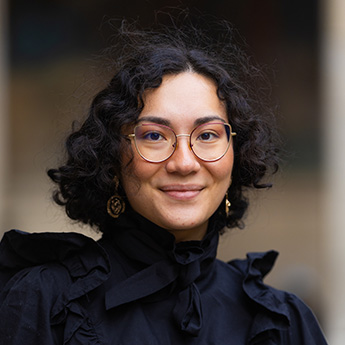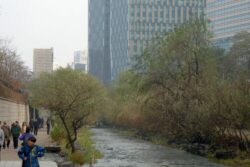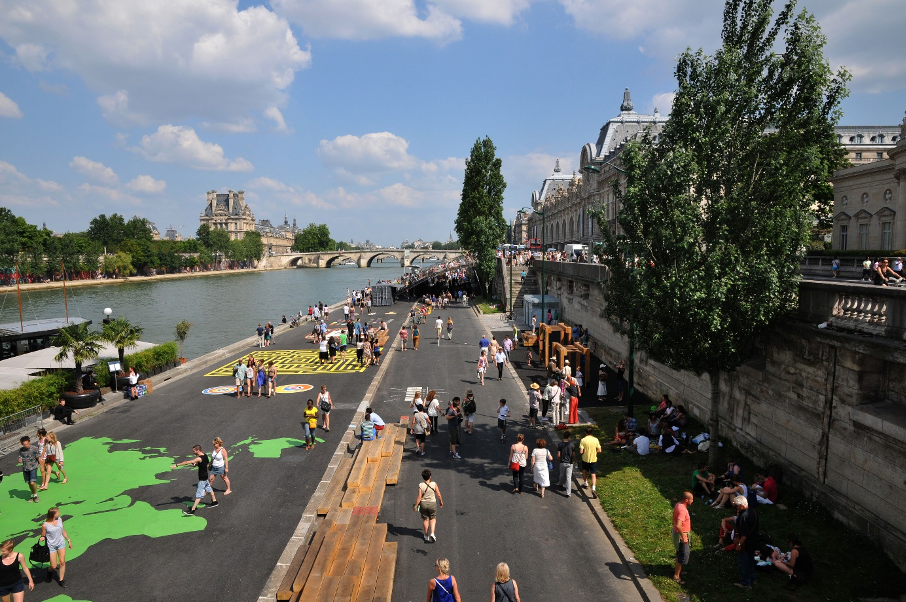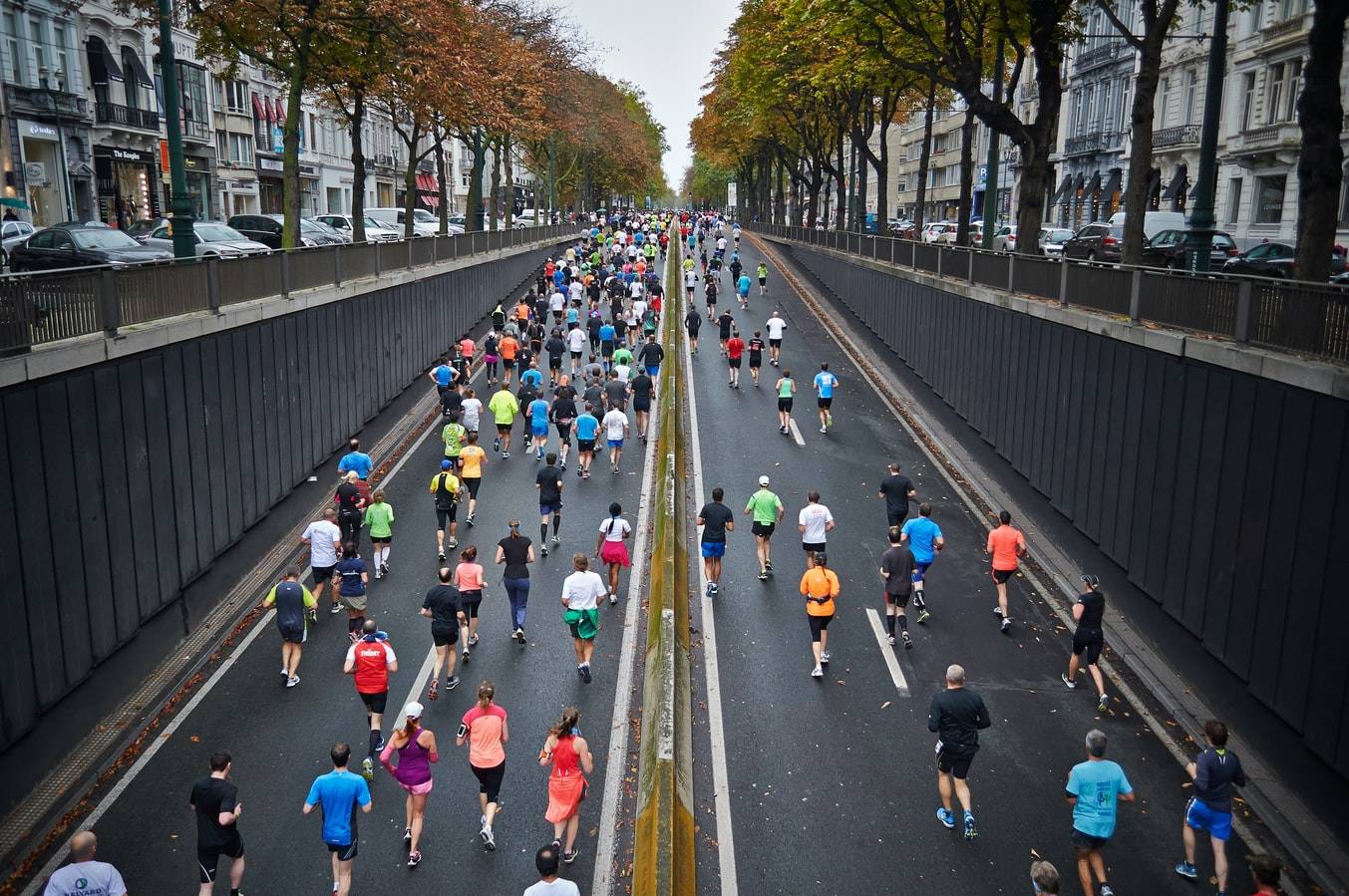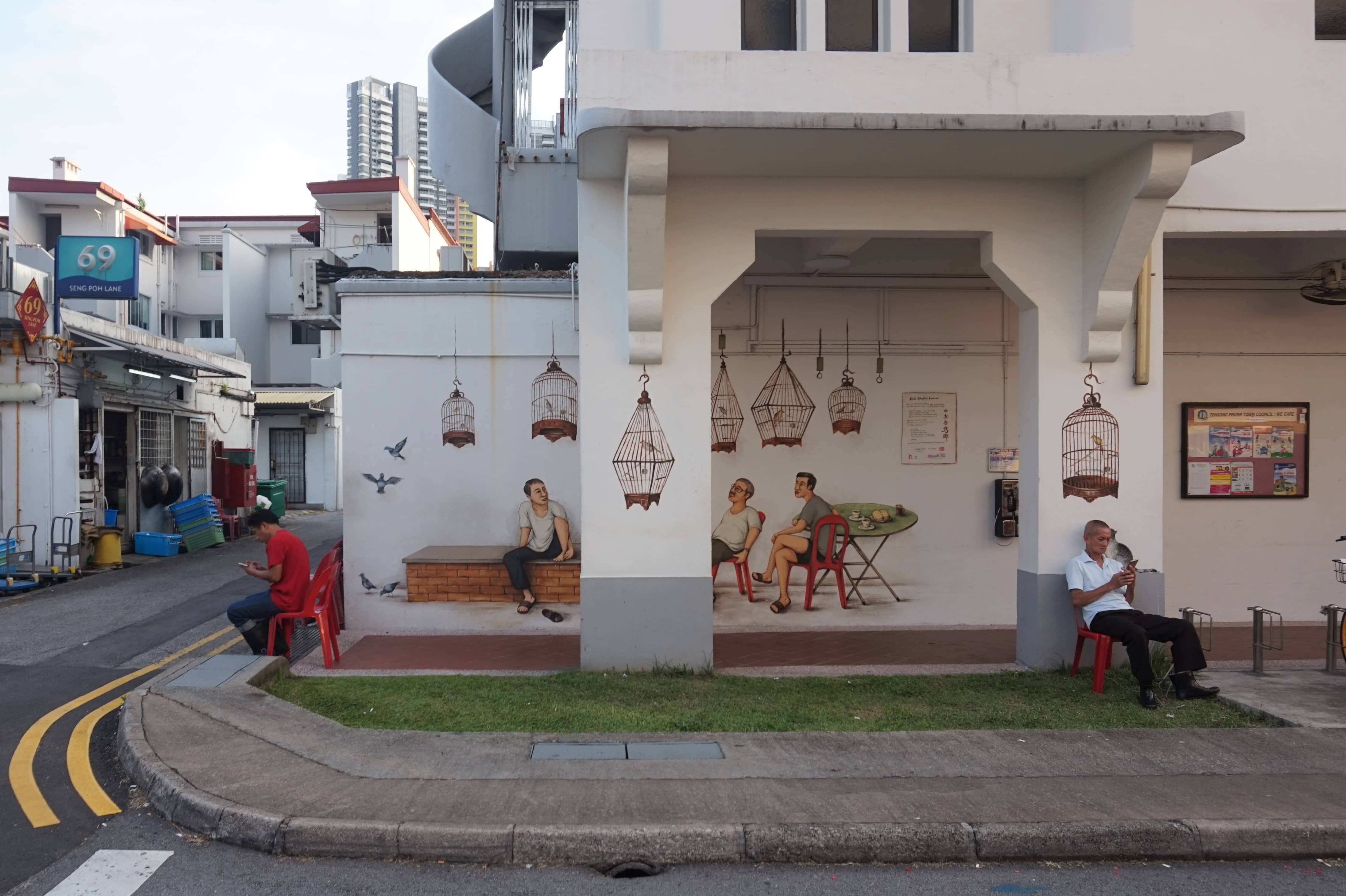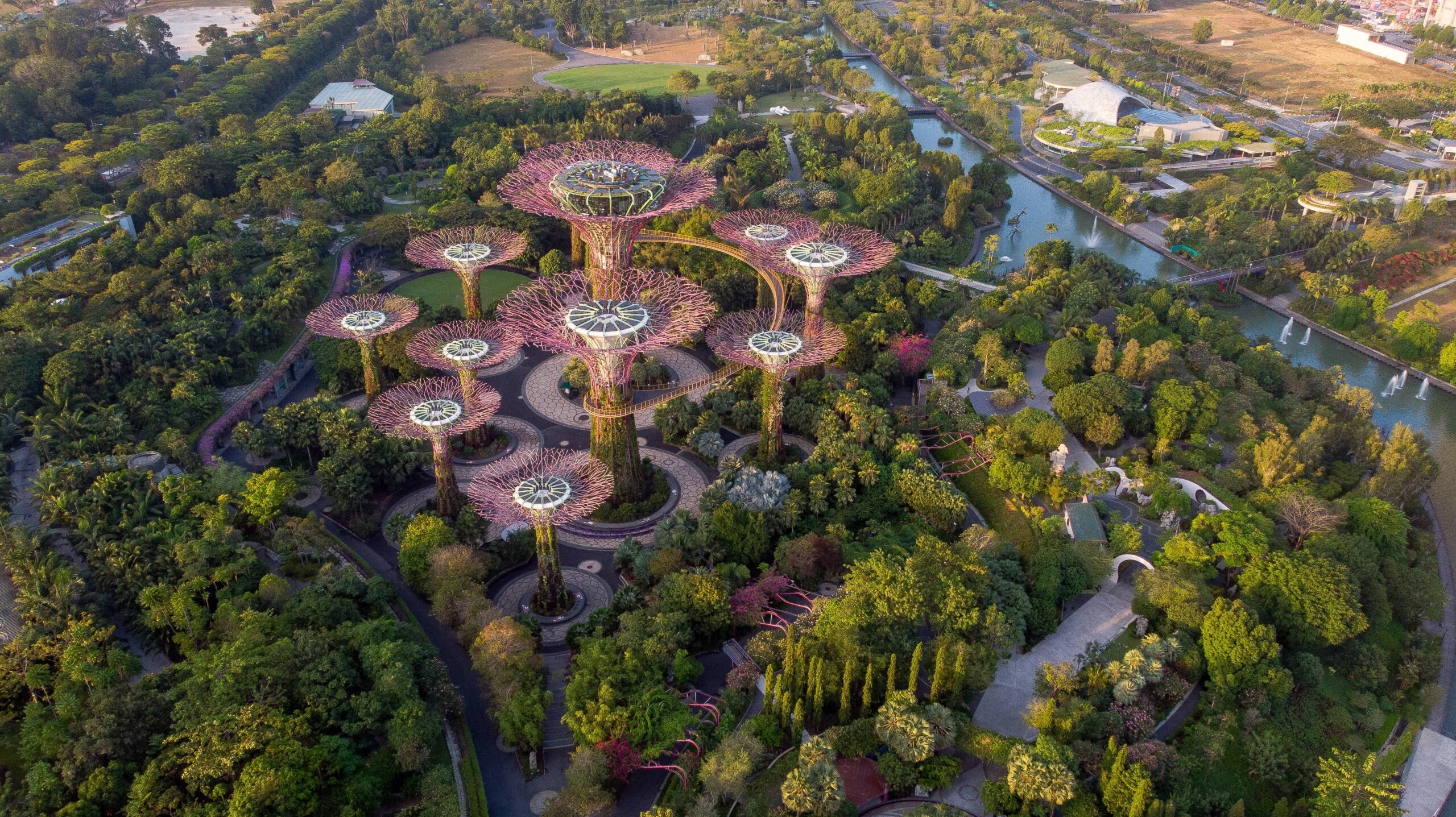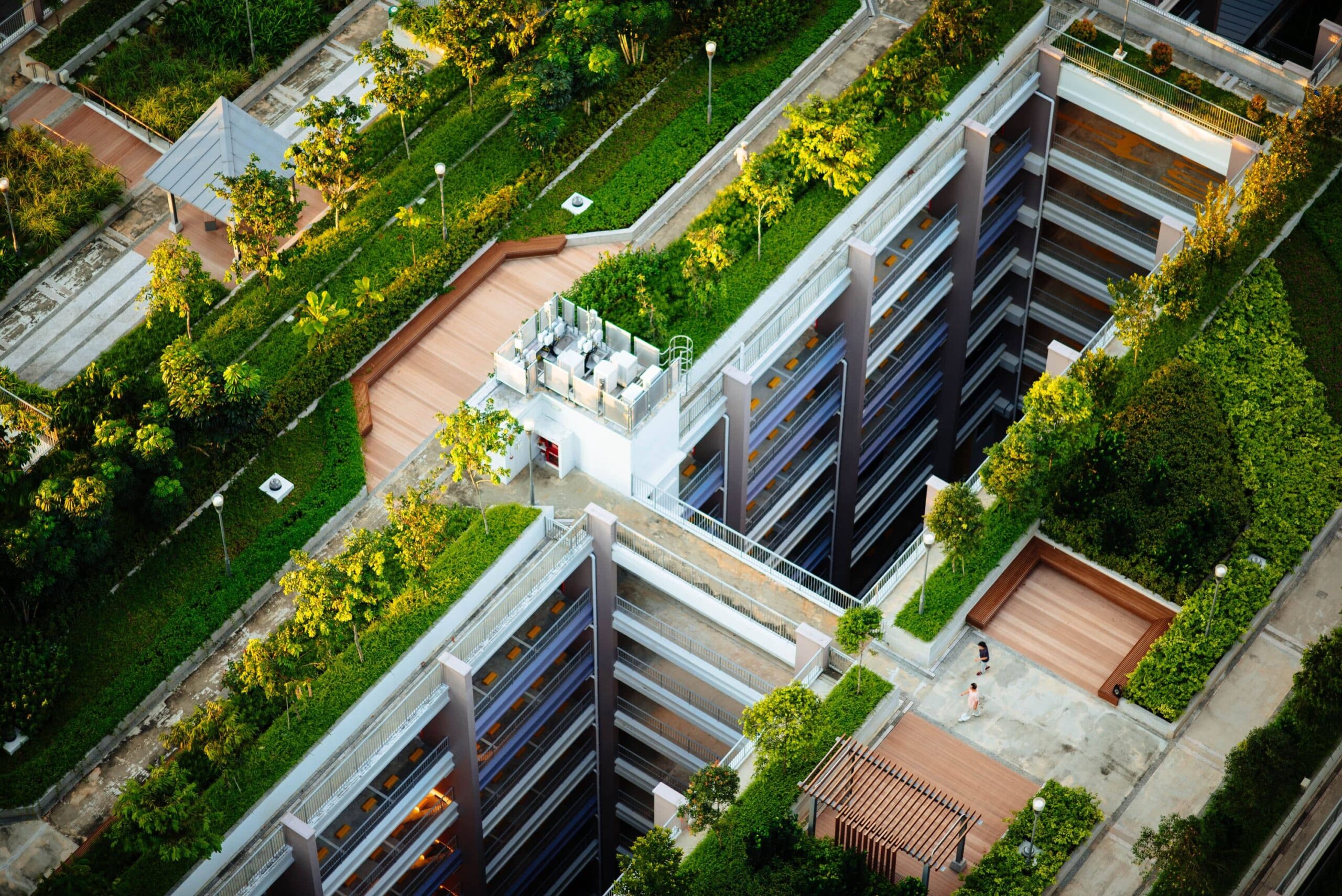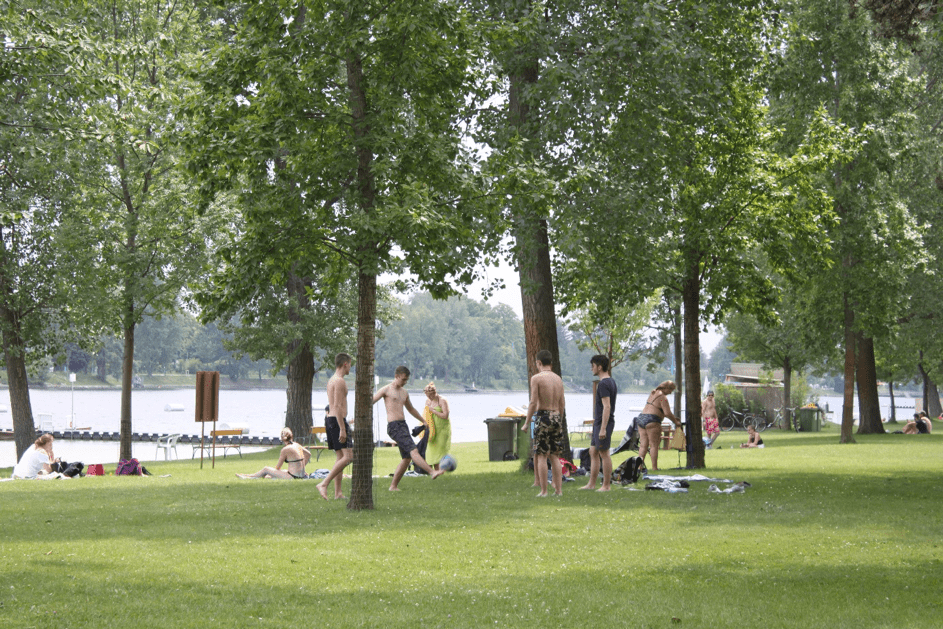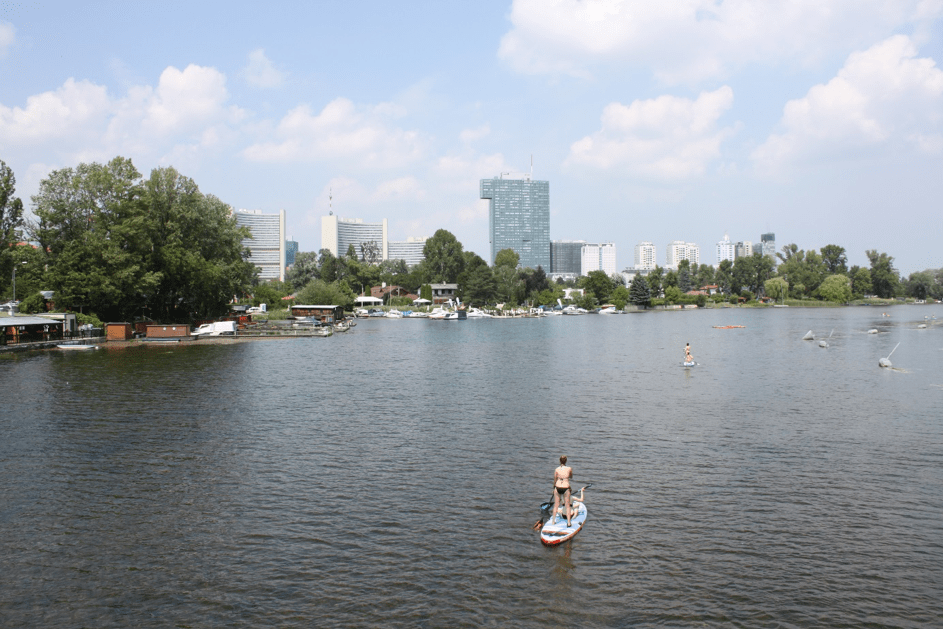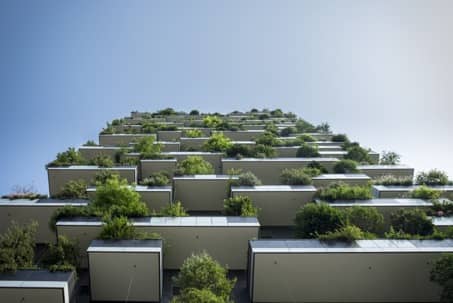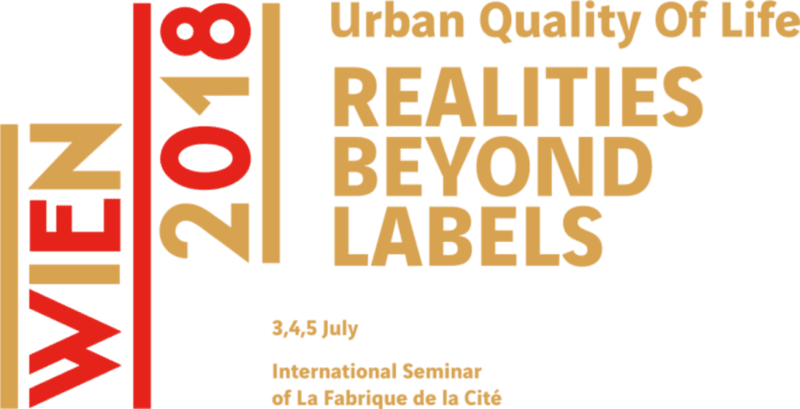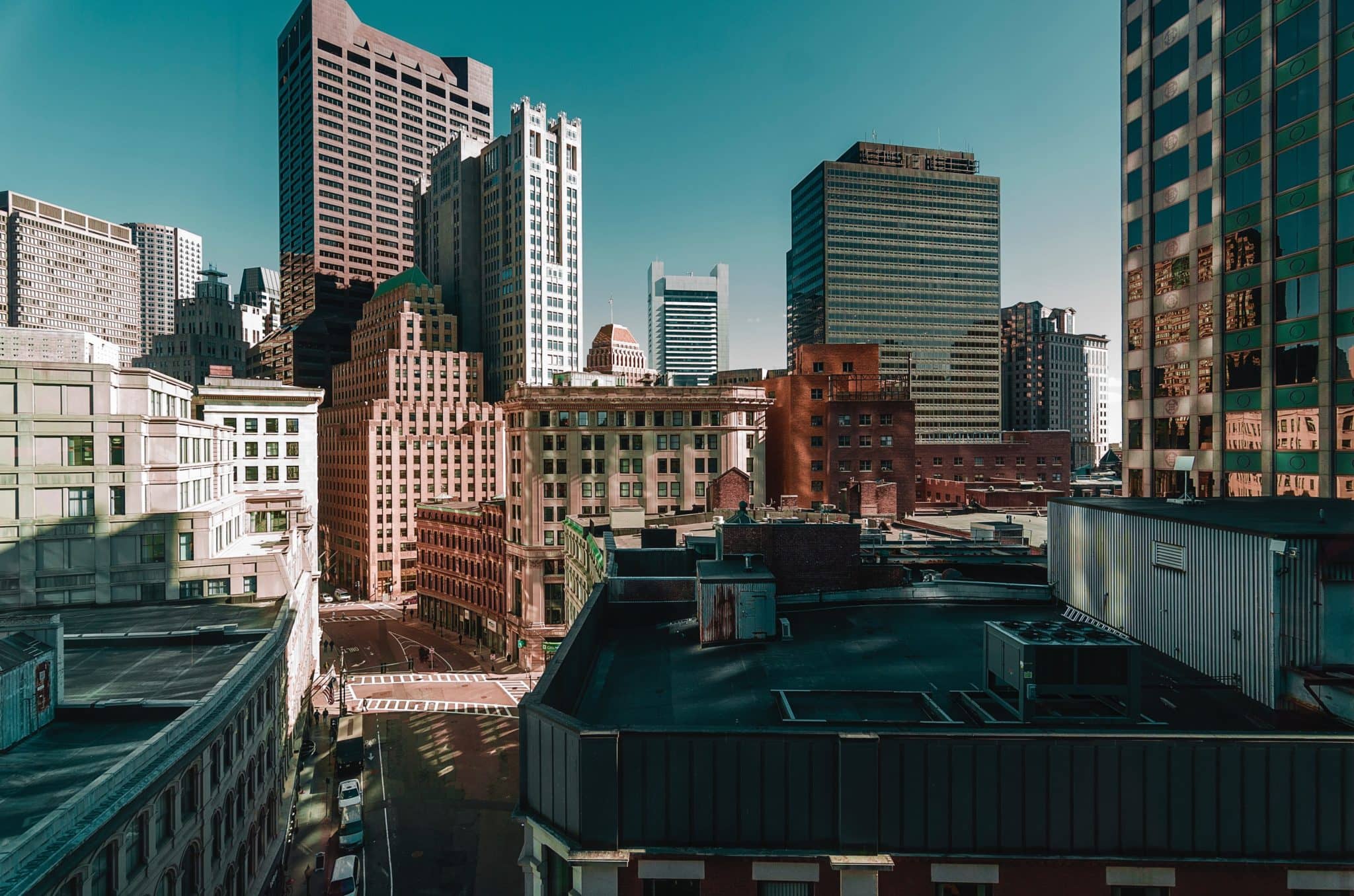

Overview #1 : What place does nature have in schoolyards beyond our borders ?
The publication of the note Les cours d’écoles : pour un retour du vivant en ville – retours d’expériences (Schoolyards: bringing natural life back to the city – feedbacks) in France1 represents an opportunity for La Fabrique de la Cité to open a window on international perspectives. How is this practice being developed in the rest of the world? What emphasis is put on green spaces and on the greening of school facilities?
Whether as a resource for urban resilience, as a learning environment for students or as a social marker, the presence of vegetation on school grounds takes on diverse meanings and implications. In order to capture the multiplicity of its uses, La Fabrique de la Cité has selected three case studies centered around the presence of nature in schoolyards. Based in the United States, in Switzerland and in the United Kingdom, each of these case studies illustrates a different aspect of the challenges posed by the restoration of nature in a school setting: innovative methods of education and governance, cross-sector collaboration for joint approaches to problem-solving, outlooks to rethink the relationship between nature and equality around the idea of balance…
Looking beyond our borders, La Fabrique de la Cité offers an overview of schoolyard greening practices – to compare and to inspire.
1. Resilience in urban spaces
With the rise in temperatures caused by climate change, cities are becoming increasingly difficult to live in. Defined as “the capacity of a system under stress to continue functioning through adaptation and transformation”2, the concept of resilience is slowly becoming central to planning objectives. Heat islands, flooding, droughts… cities are facing new challenges. In this context, schoolyard redevelopment projects have a part to play in the adaptation and transformation of cities in the face of climate change. Schoolyards are converted into refuge areas and are perceived as essential for improving urban resilience.
In Chicago, the Space to Grow program3 taps into the potential of local schools. Built on swampy grounds in the Great Lakes region, the metropolis has had to reflect on the importance of water and municipal water management since its earliest days. Chicago is particularly vulnerable to flooding, a recurring natural disaster the population has become familiar with – the memory of the Great Chicago Flood of 1992 is still fresh in the minds of the locals, after it almost entirely paralyzed the city center and induced damages that cost close to $2 billion for remediation4. The situation has prompted urban planners to rethink the city’s structure. In the early 2010s, the redevelopment of schoolyards emerged as a possible solution.
In the United States, most schoolyards are paved with asphalt, as a result of the asphaltisation trend that started in cities in the 1950s, driven by both economic concerns5 – since asphalt was easy to produce and affordable – and hygienic concerns. At the time, the prevailing idea was that asphalt, by filling in cracks and smoothing out the roughness of the ground, would make for a cleaner city; hence the quick emergence of a paving frenzy targeting neglected or insalubrious areas, with the aim of achieving a “cleaner” American urbanity6.
It was only in the course of the 2000s that major cities began to concern themselves with de-asphaltisation and greening processes. In Chicago, the Space to Grow program is aligned with this movement, and embodies the concerns shared by the city’s different stakeholders. Planners eager to better manage the risk of flooding joined forces with Chicago Public Schools (CPS) administrators. CPS officials were wishing, among other things, to implement one of their recent policies providing mandatory recess for students7 – a measure that broke with the long-established habit of having entire school days with no recess breaks. Planners and CPS officials were supported by residents and environmental NGOs wishing to provide a better living environment for children and residents alike.
Their engagement has led to an extensive campaign to deseal, renovate and reintroduce vegetation on school grounds. Every year, six selected public schools are allocated $1.5 million each by the Space to Grow initiative in order to restore nature in their playgrounds8 and in doing so, increase the surface of desealed ground in the city.
The greening process happening in schools has also contributed to strengthening social ties in surrounding neighborhoods. Collaborative in nature, this project was undertaken in consultation with local residents9. By designing schoolyards similar to municipal parks, and opening them to the public outside school hours10, a continuity is created between the school and the neighborhood – overcoming the enclosed or isolated character that sometimes prevail in the design of school premises. The schoolyards’ purpose is often redefined during holiday periods (weekends, summer break, etc.) to make way for events organized by local associations as part of a carefully thought-out event programming11.
In Chicago, the greening of schoolyards has become a driving force for sound practices. Today, young students have some learning to do, but decision-makers too: the Metropolitan Water Reclamation District of Greater Chicago, for example, has announced that it “want[s] to do more projects that have benefits that extend beyond water management”12, demonstrating its willingness to develop cross-sector solutions.
2. A different approach to teaching: finding learning opportunities in green schoolyards
For thinkers such as Zygmunt Bauman, a Polish postmodernist sociologist and philosopher, a democratic and sustainable school is the foundation upon which freedom is built13. From this perspective, greening schoolyards can be seen as an excellent educational opportunity. Involving young people in these projects has a number of positive impacts, highlighted by several studies.
Despite being the primary users of schoolyards, young people have traditionally been excluded from decision-making spheres and processes14, yet their involvement could ensure more efficient outcomes and optimum benefits for the project15. The necessity to consider students’ voices when implementing the greening of their recreational spaces is therefore an opportunity to question and reshape traditional modes of governance and decision-making.
These are the conclusions that can be drawn a few years after the Cool City Project was first implemented in Sécheron (canton of Geneva, Switzerland), where “regular workshops with students and teachers [have been held] on interactive digital platforms since November 2020” with the aim of “co-creating [the re-greening project]” with the help of the relevant population16.
Actors working on the implementation of consultation processes facilitated the joint elaboration of the project. The Consultation Unit of the canton’s Department of Territory and URBZ, a non-governmental organization based in Geneva since 2015 “specializing in participatory-based programming, planning and urban design”17 both took part in the development of tailor-made decision-making processes. These processes enabled the students to contribute to the project through discussions, on-foot inspection of the school’s neighborhood, drawing workshops18…
Student involvement is, moreover, particularly appreciated when designing nature restoration plans, with students often described as “curious and creative people who wouldn’t be afraid of suggesting slightly odd things and could have ideas which are completely different from adults”19 – all in all, a very fertile encounter where innovative solutions emerged from sharing perspectives.
Concurrently, keeping school facilities open and accessible to all residents outside of school hours – a distinctive feature of Switzerland – has helped diversify involved stakeholders. This specificity allows the incorporation of the school’s redevelopment into a general urban development plan for Sécheron, which is one of the city’s objectives, all the while broadening the scope of encounters happening as part of the project’s consultative processes. In doing so, the students engage in dialogue with stakeholders ranging from members of the Department of Territory to members of the Department of Public Education20.
But the participation of students has further benefits to offer. Taking part in the redevelopment of a space they frequent on a daily-basis boosts their self-esteem and motivation, by giving concrete shape to the value of school-based learning21. Offering a different perspective from the theoretical subjects covered in class, participating in the greening of their schoolyard complements the range of knowledge they are taught at school. It could represent an opportunity for students to acquire new skills 22 and to establish new links with the professional world23.
At Sécheron, this professionalizing component has materialized in the previously mentioned interactions between students and diverse stakeholders. Participating in the Cool City Project also represents a civic learning opportunity, by letting younger students play their “role as citizen[s] […] learning process of citizenship”24.
Greening projects thus constitute a reservoir of collective knowledge and “savoir-vivre”. Nevertheless, are these greening initiatives truly accessible to a wider audience? In some countries, the presence of green spaces in schools reflects social disparities, prompting us to reflect on whether these redevelopment strategies participate in reinforcing or reducing existing inequalities.
3. Green spaces on school grounds: a social marker and vector of inequalities in the United Kingdom
Earlier this year, The Guardian conducted a study underlining the inequalities in access to green spaces for British schoolchildren. According to the survey, students enrolled in the country’s most prestigious schools enjoy up to ten times the amount of green space that the average state school student can use25 : “322 sq. m, as opposed to 32 sq. m”26. These results have sparked a renewed debate on the inequalities present throughout the British education system, especially when some children have no access to any kind of green space in their school environment.
Admittedly, some renown private schools – such as Rugby, Eton27 or St Dunstan’s28 – occasionally grant access to their sports facilities or part of their green spaces to pupils from state schools. However, these are voluntary arrangements, resulting from a philanthropic gesture rather than from tangible public policies. This situation highlights the importance of reversing the underlying trends behind the substantial lack of green spaces that affects pupils from state schools. Even though greening schoolyards may be an opportunity to maintain a balance, or, more realistically, to mitigate some structural inequalities of the British education system, the concreting of state schools conversely becomes a visible marker – and a factor of – exclusion.
A number of political figures from across the Channel, such as John McDonnell, former Labour Party candidate for the constituency of Hayes and Harlington, are therefore calling for legal recognition of children’s right to access green spaces29. Such a measure would turn the access to this resource into a universal right, ensuring that all schoolchildren enjoy equitable learning and development conditions.
Conclusion
The greening of schoolyards is emerging as a promising response to reduce the risks associated with climate change in cities. By creating spaces that are freely accessible to all, these initiatives reconnect schools with their urban environment and contribute to collective well-being. By introducing innovative teaching practices with proven benefits, greening also supports educational revival.
However, green spaces can also signal the presence of inequalities and, without careful attention, could even act as lever to exacerbate them. For this reason, it would seem essential to take into account the risk of “green gentrification” associated with the greening of schoolyards. This concept, defined as a process “started by the implementation of an environmental planning agenda related to green spaces that […] tend[s] to increase quality of life and property values – especially as urban environmental consciousness grows”30 is putting in the limelight mechanisms of social exclusion and the perpetuation of environmental inequities31.
This trend could translate into higher tuition fees in newly vegetated schools, or higher property prices in surrounding neighborhoods. Far from fostering social inclusion, the restoration of nature could contribute to the resurgence of inequalities. Working around this risk thus requires careful planning prior to implementation.
References
[1] LALOY BORGNA Marianne. Cours d’écoles : pour un retour du vivant en ville – retours d’expériences.
[2] FLAX Leah, KORTHALS ALTES Renet, KUPERS Roland, MONS Brett. “Greening schoolyards – An urban resilience perspective.” Page 1.
[3] Space to Grow | Greening Chicago Schoolyards. « About Space to Grow.”
[4]“Chicago Flood Anniversary: 20 Years After Downtown Disaster.”
[5] BUCKLEY, Geoffrey L., et al. “The Greening of Baltimore’s Asphalt Schoolyards.” Page 518.
[6] BUCKLEY, Geoffrey L., et al. “The Greening of Baltimore’s Asphalt Schoolyards.” Pages 521 & 522.
[7] FLAX Leah, KORTHALS ALTES Renet, KUPERS Roland, MONS Brett. “Greening schoolyards – An urban resilience perspective.” Page 3.
[8] Ibid. Page 3.
[9] Ibid. Page 6.
[10] Ibid. Page 6.
[11] Ibid. Page 6.
[12] Ibid. Page 7.
[13] DIMOULI Ioanneta, KOUMPAROU Dimitra, GOLFINIPOULOS Spiridon K. “From School Gardens to Community Oases: Fostering Environmental and Social Resilience in Urban Spaces.” Page 688.
[14] SCHEIDER, Alice Aimée. An Oasis for students. Page 2.
[15] Ibid. Page 11.
[16] Republic et canton of Geneva. « Luttons contre la surchauffe au cycle de Sécheron. »
[17] URBZ. « Genève. »
[18] SCHEIDER, Alice Aimée. An Oasis for students. Page 33.
[19] Ibid. Page 32.
[20] Ibid. Pages 6-7.
[21] CHRYSOMALIDOU Anastasia, TAKOS Ioannis, SPILIOTIS Ioannis, XOFIS Panteleimon. “The Participation of Teachers in Greece in Outdoor Education Activities and the Schools’ Perceptions of the Benefits to Students.” Page 15.
[22] SCHEIDER, Alice Aimée. An Oasis for students. Page 11.
[23] CHRYSOMALIDOU Anastasia, TAKOS Ioannis, SPILIOTIS Ioannis, XOFIS Panteleimon. “The Participation of Teachers in Greece in Outdoor Education Activities and the Schools’ Perceptions of the Benefits to Students.” Page 15.
[24] SCHEIDER, Alice Aimée. An Oasis for students. Page 32.
[25] HORTON, Helena. “Private schools in England should be made to share their green space, say campaigners.”
[26] Ibid.
[27] Ibid.
[28] KEENAN, Rachel. “Private schools urged to share grounds to help UK children access green spaces.”
[29] HORTON, Helena. “Private schools in England should be made to share their green space, say campaigners.”
[30] Barcelona Lab for Urban Environmental Justice and Sustainability. “Green Gentrification.” Page 1.
[31] Barcelona Lab for Urban Environmental Justice and Sustainability. “Critical Sustainability Studies.”
Bibliography
Barcelona Lab for Urban Environmental Justice and Sustainability. “Green Gentrification.” https://create.umn.edu/wp-content/uploads/2020/02/Green-Gentrification.pdf
Barcelona Lab for Urban Environmental Justice and Sustainability. “Critical Sustainability Studies.” https://www.bcnuej.org/green-gentrification/
BUCKLEY, Geoffrey L., et al. “The Greening of Baltimore’s Asphalt Schoolyards.” Geographical Review, Vol. 107, n°3, 2017, pp. 516–35.
“Chicago Flood Anniversary: 20 Years After Downtown Disaster.” The Huffington Post, April 13th 2012. https://www.huffpost.com/entry/chicago-flood-anniversary_n_1423916
CHRYSOMALIDOU Anastasia, TAKOS Ioannis, SPILIOTIS Ioannis, XOFIS Panteleimon. “The Participation of Teachers in Greece in Outdoor Education Activities and the Schools’ Perceptions of the Benefits to Students.” Education Sciences. Vol. 14, n°8, 2024, pp. 1-23.
DIMOULI Ioanneta, KOUMPAROU Dimitra, GOLFINIPOULOS Spiridon K. “From School Gardens to Community Oases: Fostering Environmental and Social Resilience in Urban Spaces.” Geographies. Vol. 4, n°4, 2024, pp. 687-712.
FLAX Leah, KORTHALS ALTES Renet, KUPERS Roland, MONS Brett. “Greening schoolyards – An urban resilience perspective.” Cities, n°106, 2020.
HORTON, Helena. “Private schools in England should be made to share their green space, say campaigners.” The Guardian, June 17th 2024. https://www.theguardian.com/education/article/2024/jun/17/private-schools-england-green-space-share-campaigners
KEENAN, Rachel. “Private schools urged to share grounds to help UK children access green spaces.” The Guardian, September 17th 2024. https://www.theguardian.com/environment/2024/sep/17/private-schools-urged-share-grounds-uk-children-access-green-spaces
LALOY BORGNA Marianne. Les cours d’écoles : pour un retour du vivant en ville – retours d’expériences. La Fabrique de la Cité, January 16th 2025.
SCHEIDER, Alice Aimée. An Oasis for students. Investigating the potential co-benefits of schoolyard redesign for climate adaptation. Master Thesis Series in Environmental Studies and Sustainability Science. LUCSUS (Lund University Centre for Sustainability Studies). May 12th2020.
Republic and Canton of Geneva. « Luttons contre la surchauffe au cycle de Sécheron. » https://www.ge.ch/dossier/concertation/demarches-terminees/luttons-contre-surchauffe-au-cycle-secheron
Republic and Canton of Geneva. « Cool City. Restitution démarche de concertation. Octobre 2020 – Juin 2021. » July 14th 2021. https://www.ge.ch/document/26620/telecharger
Space to Grow | Greening Chicago Schoolyards. « About Space to Grow.” https://www.spacetogrowchicago.org/about/about-space-to-grow/
URBZ. « Genève. » https://urbz.net/fr/geneva
This article was translated by Célestine Lecat.
These other publications may also be of interest to you:

Viktor Mayer-Schönberger: what role does big data play in cities?
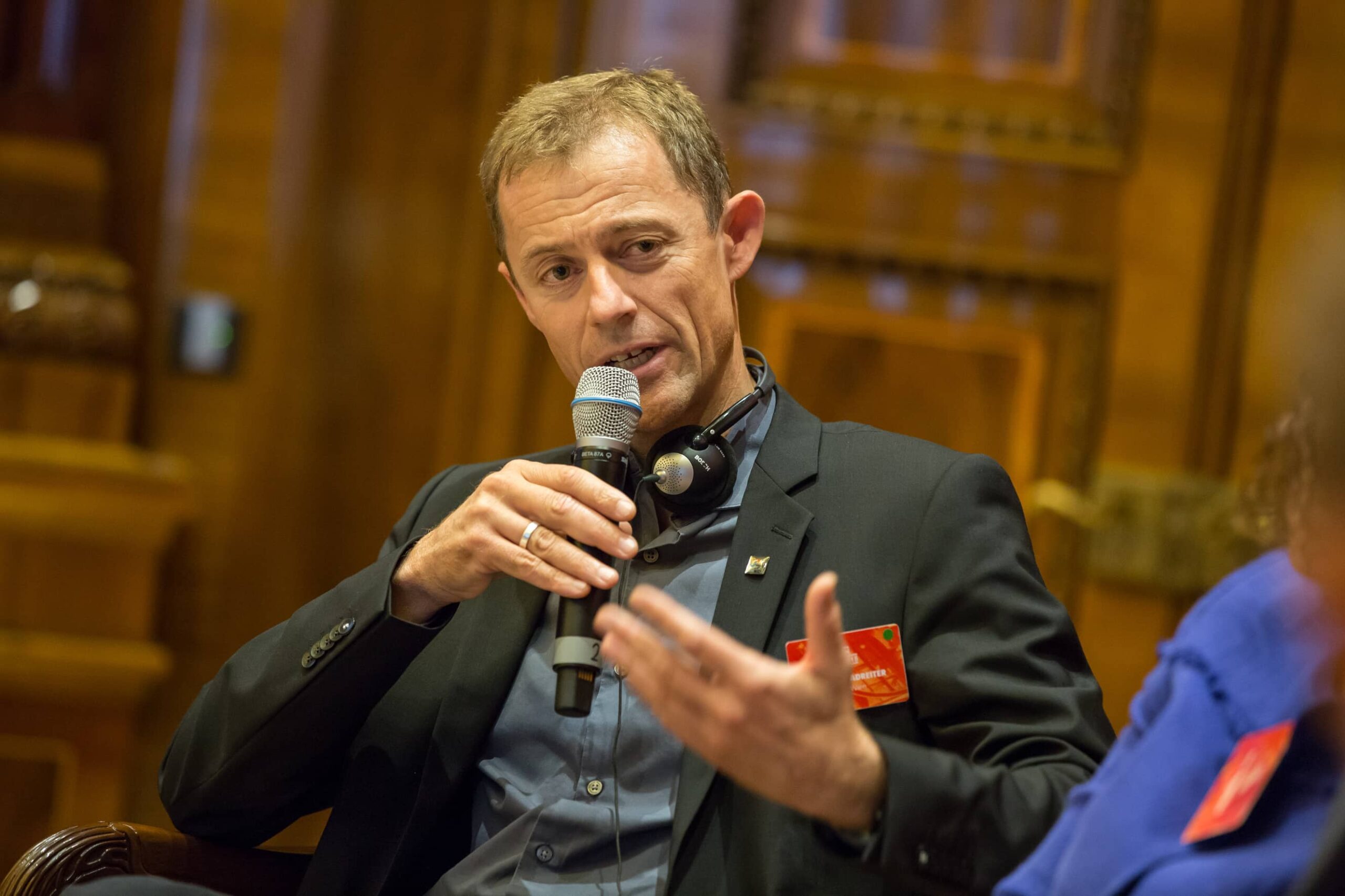
Thomas Madreiter: Vienna and the smart city
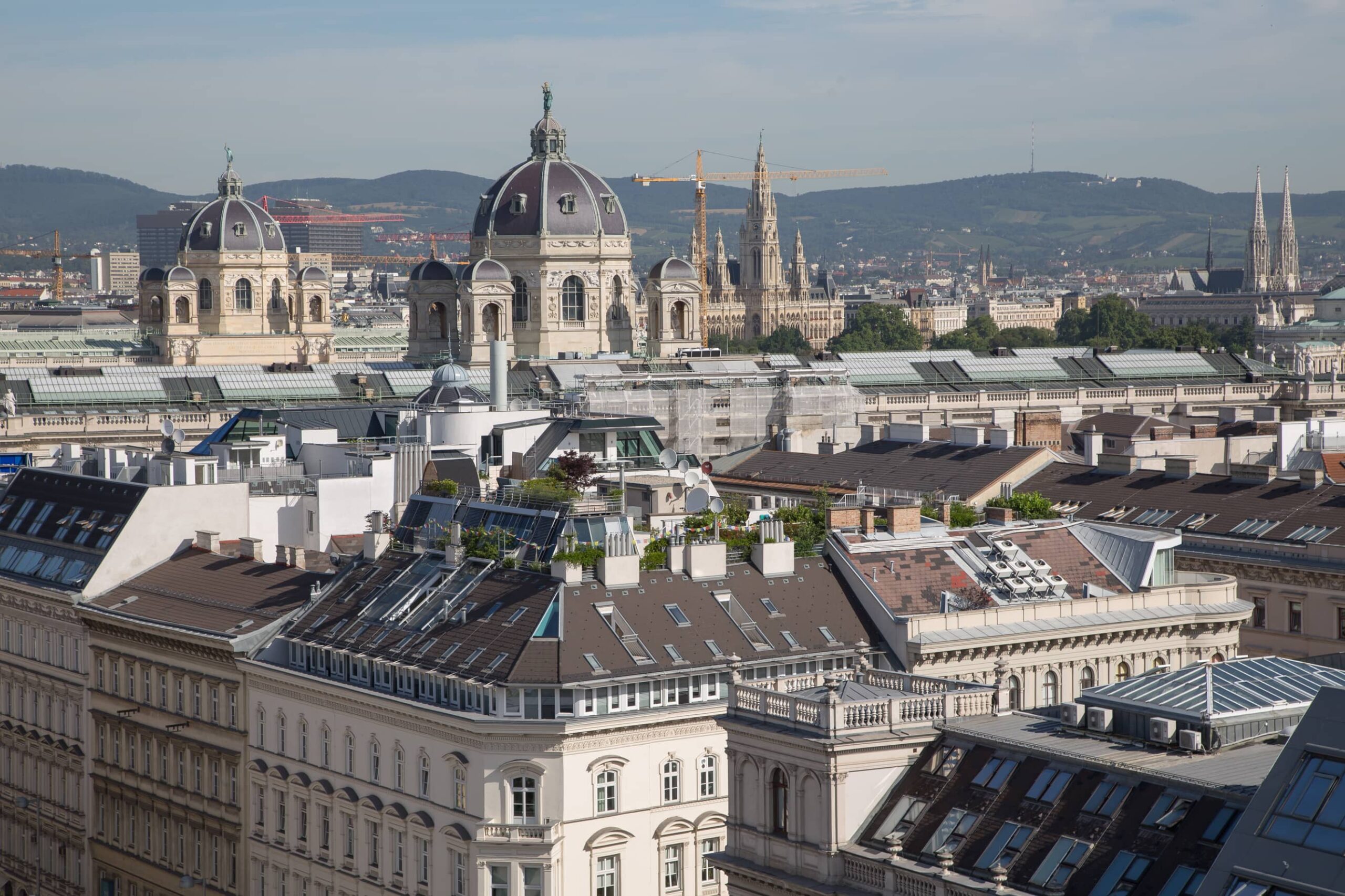
Vienna

Breathless Metropolises
La Fabrique de la Cité
La Fabrique de la Cité is a think tank dedicated to urban foresight, created by the VINCI group, its sponsor, in 2010. La Fabrique de la Cité acts as a forum where urban stakeholders, whether French or international, collaborate to bring forth new ways of building and rebuilding cities.














